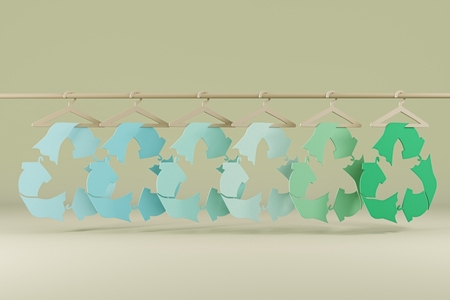

WRAP
According to a report by the climate change advocacy group WRAP (Waste and Resources Action Programme), fashion retailers and brands can lessen the environmental effect of clothes by altering the designs of some important product categories.
The WRAP report, which was released on World Circular Textiles Day, shows that while a variety of clothing items have already become more durable since 2013, there are still plenty of opportunities for fashion brands and retailers to improve the sustainability and circularity of clothing.
The report, which is based on a survey of over 6,000 UK adults and represents 45,000 items of clothing, demonstrates changes in consumer clothing retention over the past eight years and how being open to new methods of “shopping” for clothes could significantly lower the environmental cost of clothing.
The survey revealed that although many customers already buy and sell pre-loved clothing, more are open to alternative methods to “buy new” purchasing, such as subscriptions, preloved, and leasing. The UK has 1.6 billion articles of unworn clothing in its wardrobes.
According to WRAP, the survey reveals a significant possibility for fashion companies and shops to provide alternative apparel models like rental subscriptions, as well as for astute sellers and buyers to make some extra income, save some money, and get a great deal.
According to the report, there is potential for retailers and brands to lessen the environmental impact that clothing has by incorporating circular design into some of their most important product categories. Although considerations must be made to understand how products might be built for circularity, the article claims that the data indicate the necessity for design adjustments.
WRAP director collaboration and change, Catherine David, said that the apparel and textiles industry has the fourth-largest environmental effect on the earth. WRAP is working with the biggest retailers and brands in the UK to address this through the ambitious aims of Textiles 2030. Although a lot of people already buy and sell used clothing, their analysis demonstrates the enormous financial and environmental possibilities that exist in all of our wardrobes.
She added that if the fashion industry is to start achieving the reductions in greenhouse gas emissions required to limit global warming to 1.5 degrees. Textiles 2030 signatories are already beginning to introduce resale and rental business models, but these alongside repair models must become widely adopted.
According to WRAP, Textiles 2030 may assist fashion brands and retailers in making design decisions that will increase the lifespan of clothing by helping them understand the anticipated lifetime of various clothing categories, the elements that affect this, and the reasons for not wearing.
An innovative washable touchless technology now allows users to interact with textiles and apparel simply by pointing a finger over…
Technosport has partnered with textile machinery manufacturer Karl Mayer to enhance its production capabilities using cutting-edge Tricot machines.
The Department of Science and Technology has partnered with Bayo Manila Inc. under the DOST CRADLE Program to launch the…
AGC Chemicals and DRYFIBER, LLC have announced the development of non-fluorinated oil and water repellent for nonwoven fabrics and technical…
Schuh has partnered with Conscious Creative Unit and Are You Mad to repurpose post-consumer waste materials into functional and artistic…
Fashion for Good and TMC have launched of 'Behind the Break: Exploring Fibre Fragmentation,' a study aimed at identifying key…